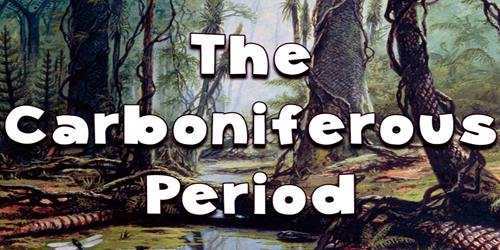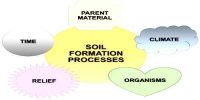The Carboniferous Period, the fifth interval of the Paleozoic Period, the Devonian Period is the next successor and the Permanente Period. Carboniferous is a geological period and the system extends 60 million years from the end of the Devonian period to 358.9 million years ago (Maya), 298.9 Maya since the beginning of the Permian period. The name Carboniferous is derived from the word “coal-bearing” and the Latin word carbo (“coal”) and ferre (“I carry, I carry”) and was coined in 1822 by geologists William Conibier and William Phillips. The name Carboniferous refers to the coal-bearing layer that marks the upper part of this series worldwide. The term “Carboniferous” comes from England, in the context of rich coal deposits occurring there. The coal deposits are found throughout northern Europe, Asia, and the Midwest and eastern North America. Mississippi Yuramica or Laurasia included North America, Northern Europe, and Greenland, separated from the large, cool continent of Gondwana in the south. These phases are (from first to last) the Tarneseian, Visan, and Serpukhovian side of the Mississippi – and the Pennsylvania Bashkirians, Moskovians, Kasimovians, and Gazelians.
Based on a study of British rock succession, it was the first of the modern ‘system’ names to be employed, and it reflects that at that time large coal beds were made worldwide. It empowered the ancestors of birds, mammals, and reptiles to lay eggs on the ground without fear of eradication. Geologically, the late Carboniferous collision of Gondwana (present-day Africa, South America, Antarctica, Australia, and India) in Lundesia (present-day Europe, Asia, and North America) produced the Appalachian Mountain Belt and Harasikian Mountains of eastern North America. Choreographically as a subsystem according to international agreements. In Europe, the Carboniferous Period is divided into the Dantean and later Silissian subsystems, but the boundaries between these divisions are below the internationally accepted Mississippian Pennsylvania border. In climates, there was a tendency toward milder temperatures during carboniferous, as evidenced by the reduction of lycopods and large insects and increasing the number of tree ferns. Earthly life was established by the time period of carboniferous. Both were dominant ground vertebrae, in which a branch would eventually evolve into the amniotic, the first terrestrial vertebrae.
The Carboniferous Period Mountains were a time when continental Pangea formed as a result of the collision between the Laotian and Gondwanaland landmasses. This collision led to the rise of mountain ranges such as the Appalachian Mountains, the Hercynian Mountains, and the Ural Mountains. During the Devonian period, orogenies (mountain-making events) formed the continent of “Old Red Sandstone”. The main landmass of Lauria is made up of Western Europe through present-day North America, Urals, and Balto-Scandinavia. The expansive woodland covered the land that will eventually be laid down and today will become the coal bed featuring carboniferous stratigraphy. The atmospheric content of oxygen also reached the highest level in geological history during this time, 35% compared to today’s 21%, allowing terrestrial invertebrates to evolve in great shape.
The continents experienced the formation of glaciers, seabed and low mountains in the latter half of the period to form perazia with conflict. Africa clashed with eastern North America in last Pennsylvania, an event that formed the Appalachian Mountains. Extensive coal reservoirs spread across the lowlands to the west of the rising mountains. A slight marine and land-extinction event occurred at the end of the period, the collapse of the Carboniferous Rainforest, caused by climate change.















